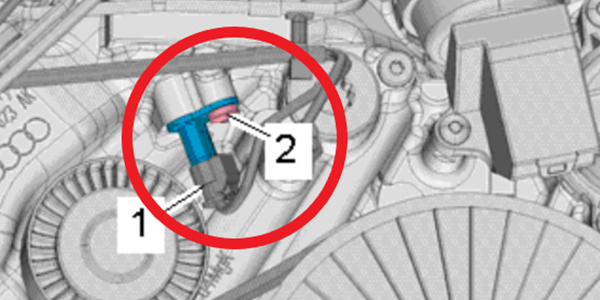Vehicle: 2016 Audi A3 Quattro Sedan (8VS), L4-2.0L Turbo (CNTC), Automatically Shifted Manual Transmission/Transaxle
Mileage: 122,366
Problem: The Audi’s owner dropped it off at the shop because the malfunction indicator light (MIL) was on, and the engine was running extremely hot according to the coolant temperature gauge.
Case Details: The technician connected a scanner and retrieved diagnostic trouble code (DTC) P0116 – Engine Coolant Temperature (ECT) Sensor 1 Circuit Range / Performance.
The owner said that the thermostat, water pump and coolant temp sensor (at radiator outlet) had already been replaced at another shop. After those repairs, the gauge still showed hot. The scan tool data confirmed that the system was reporting 248 degrees Fahrenheit (120 degrees Celsius).
The technician noticed that the upper radiator hose was not getting hot. He put a call into ALLDATA Tech-Assist to discuss the problem.
The Tech-Assist consultant advised that this vehicle had two ECT sensors – one in the radiator outlet and another on the engine block. The DTC referred to the latter sensor (G62). He suggested checking the resistance of that sensor. It should be 2250 +/- 750 Ohms. He also suggested making sure all the air was purged from the cooling system because that may be causing the cold upper radiator hose issue.
The technician followed that advice and found the G62 ECT sensor was indeed sending incorrect temperature data to the ECM.
Confirmed Repair: He replaced the G62 ECT sensor, cleared the DTC and verified that there was no air in the system. A good road test verified that the temperature gauge and scan data both agreed and reflected correct temperatures with no further issues. Repaired!
Courtesy of ALLDATA www.alldata.com














